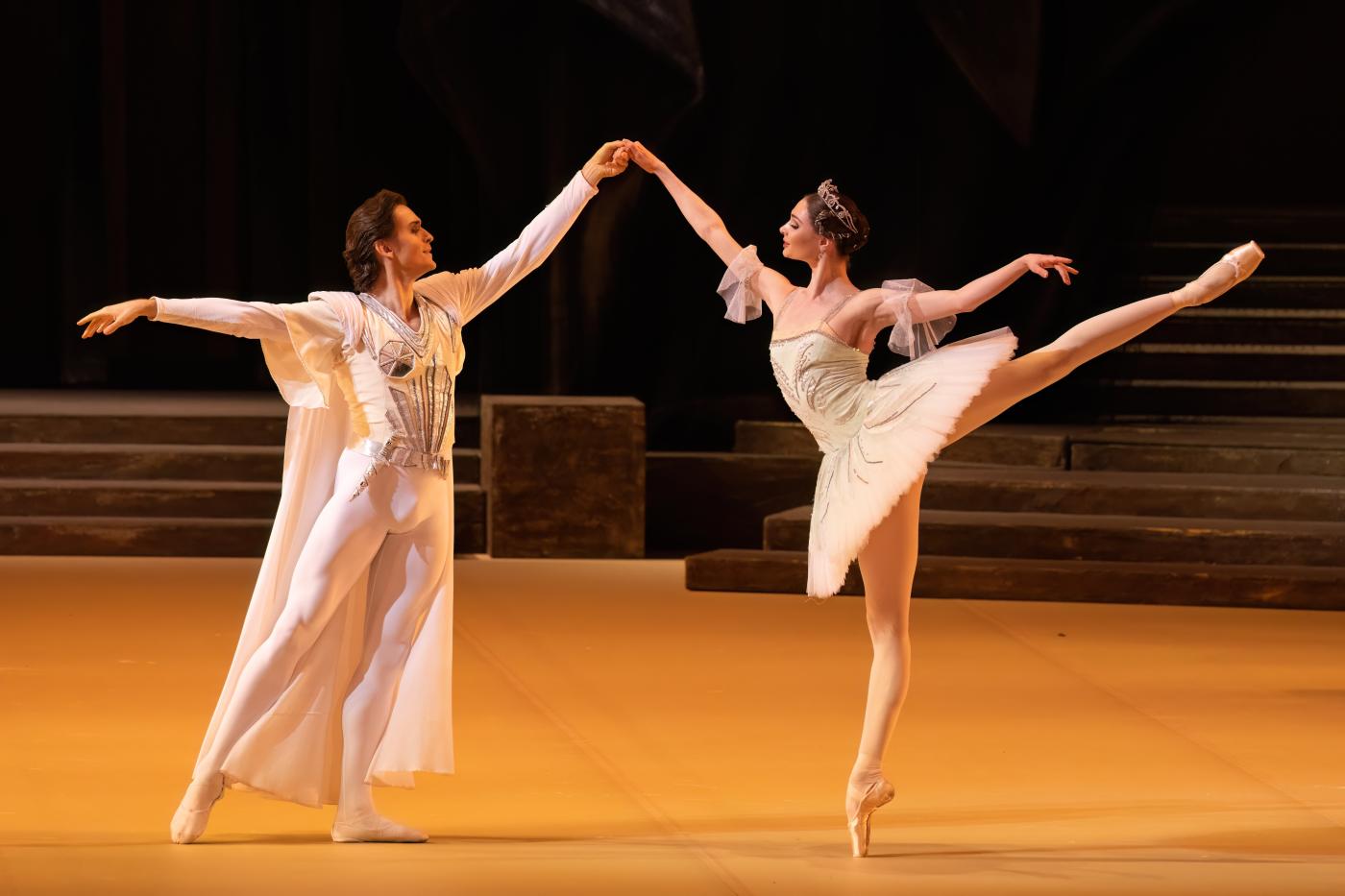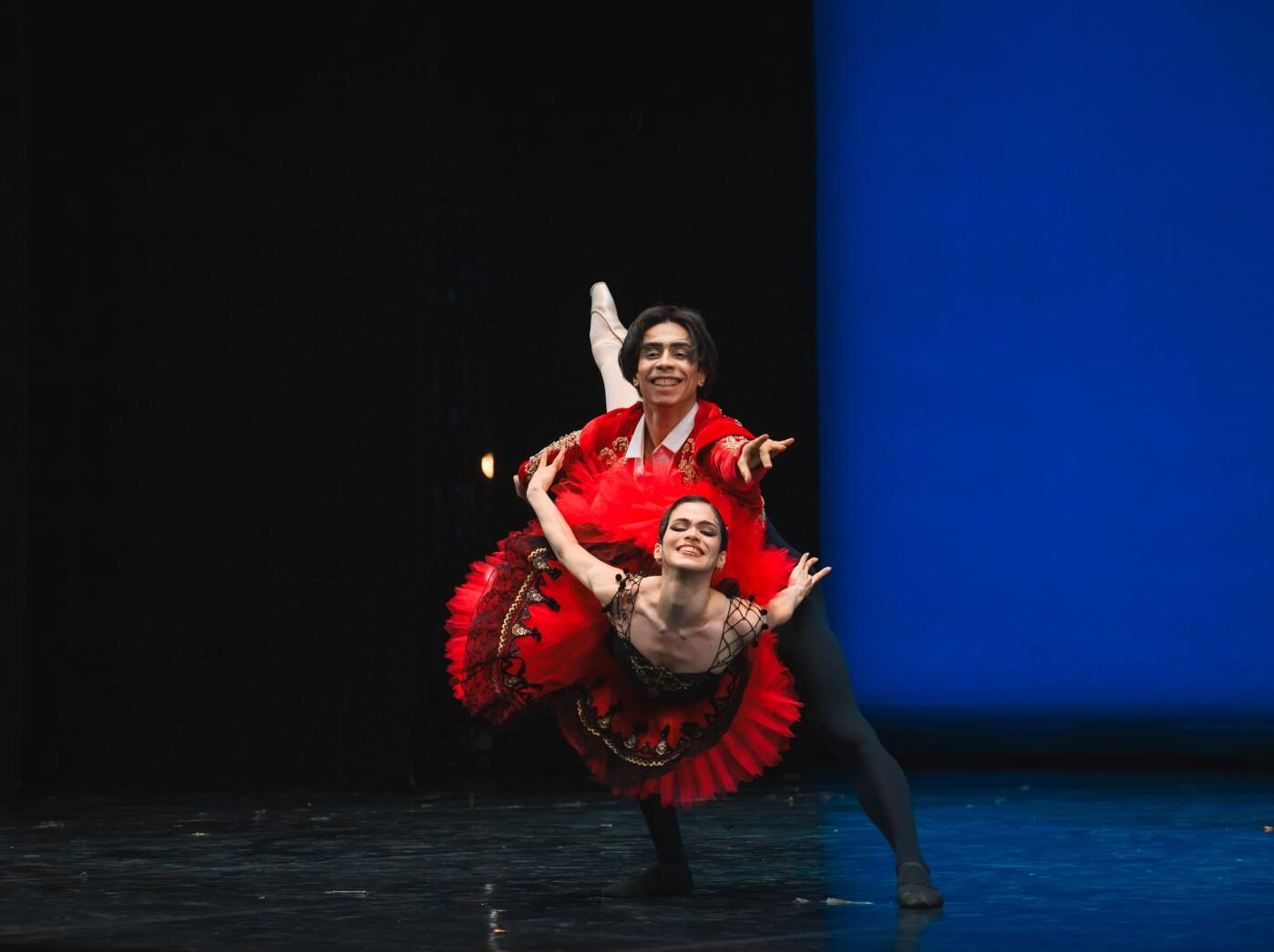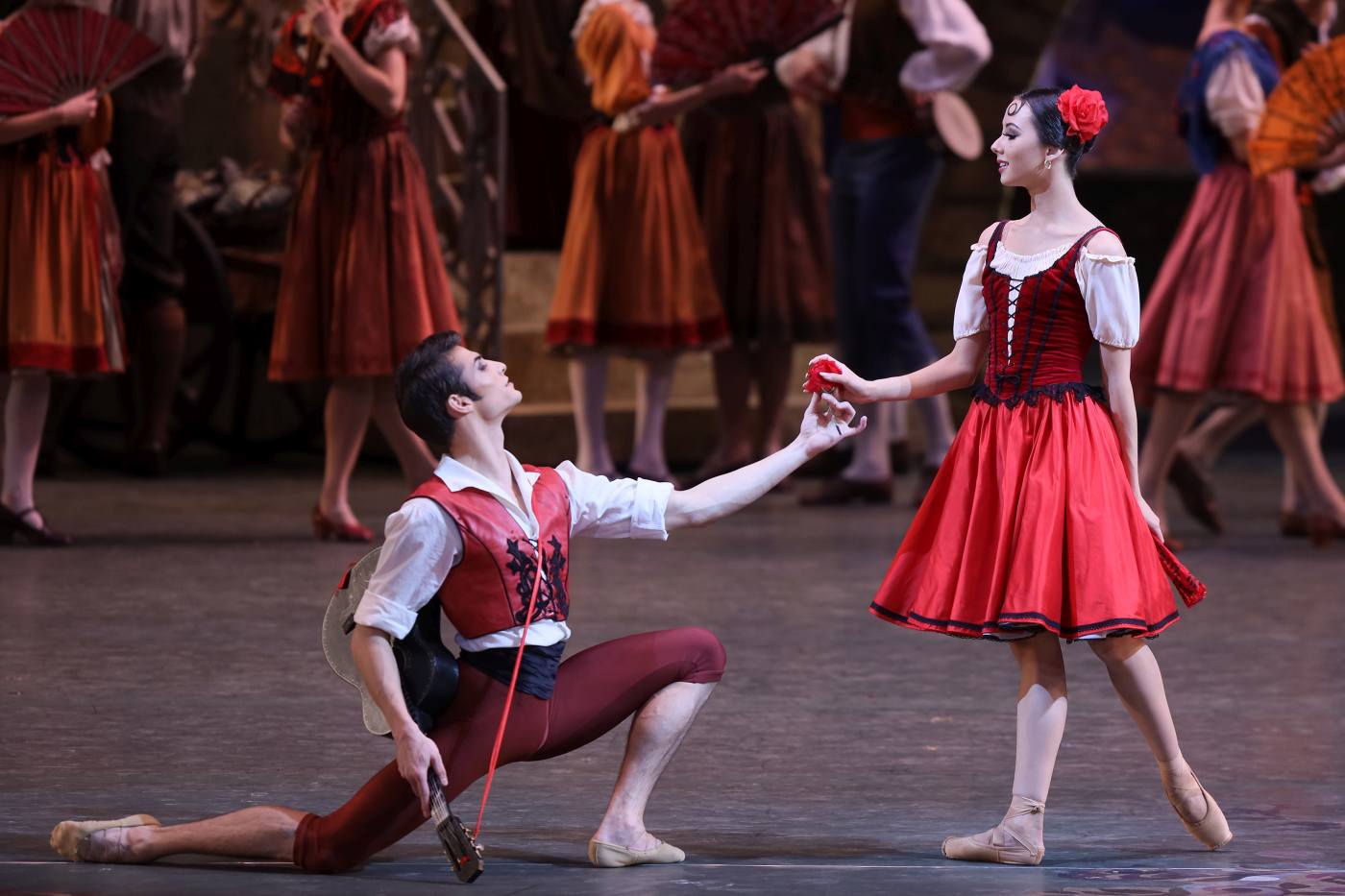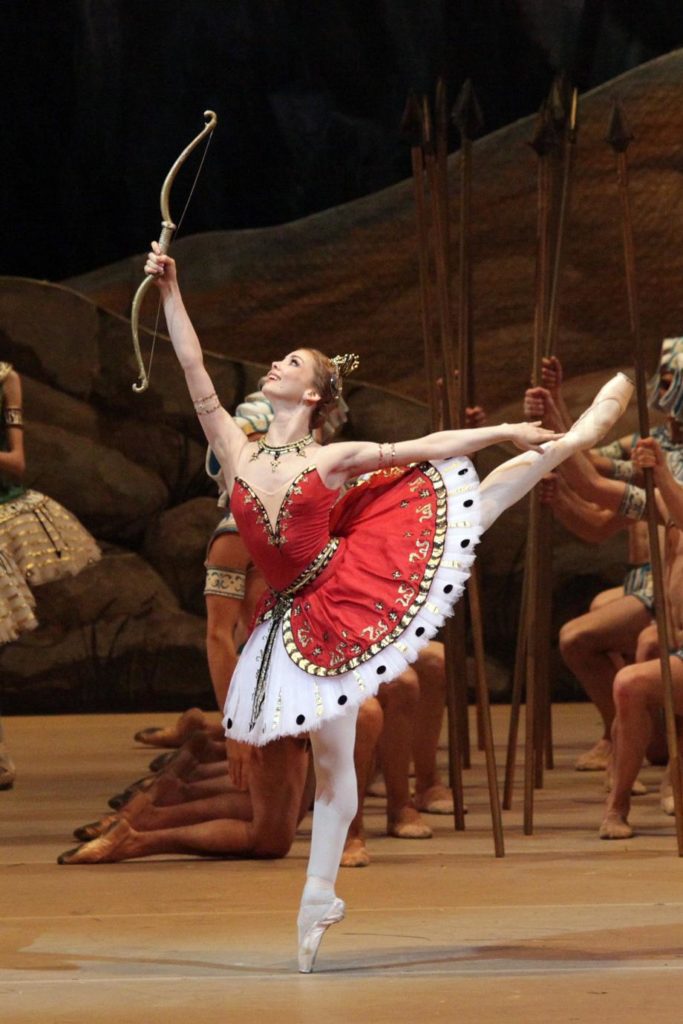Well kept
“Raymonda”
Bolshoi Ballet
Bolshoi Theatre
Moscow, Russia
April 6, 2023
by Ilona Landgraf
Copyright © 2023 by Ilona Landgraf
 “Raymonda” is a foundation of Russian ballet repertoire, but is rarely performed in Europe. After his flight to the west, Nureyev staged several versions of the work for western companies, staying faithful to Petipa’s 1898 original. The few European choreographers who’ve tackled the piece – among them Pontus Lidberg for the Royal Swedish Ballet in 2014 and Rachel Beaujean for the Dutch National Ballet in 2022 – adjusted Lydia Pashkova’s libretto to match western tastes. The only Petipa/Pashkova-based Russian production I saw was Konstantin Sergeyev’s from 1948, presented by the Maryinsky Ballet on their 2014 tour to Baden-Baden. That production felt alien in Baden-Baden’s modern Festspielhaus, reinforcing the reputation of “Raymonda” as dusty and outdated. In last year’s review of Tamara Rojo’s “Raymonda” for the English National Ballet, London critic Jenny Gilbert went so far as to call Raymonda an “ineffectual heroine” (implying that the numerous renowned ballerinas who’ve taken on that leading role in the last 125 years were foolish in doing so) and the plot “offensively silly.” She also claimed that Russian “ballet culture has a higher tolerance of such [silly] things.” After watching the Bolshoi Ballet’s “Raymonda”, I’m inclined to think that the western perspective misses what “Raymonda” is actually about. (more…)
“Raymonda” is a foundation of Russian ballet repertoire, but is rarely performed in Europe. After his flight to the west, Nureyev staged several versions of the work for western companies, staying faithful to Petipa’s 1898 original. The few European choreographers who’ve tackled the piece – among them Pontus Lidberg for the Royal Swedish Ballet in 2014 and Rachel Beaujean for the Dutch National Ballet in 2022 – adjusted Lydia Pashkova’s libretto to match western tastes. The only Petipa/Pashkova-based Russian production I saw was Konstantin Sergeyev’s from 1948, presented by the Maryinsky Ballet on their 2014 tour to Baden-Baden. That production felt alien in Baden-Baden’s modern Festspielhaus, reinforcing the reputation of “Raymonda” as dusty and outdated. In last year’s review of Tamara Rojo’s “Raymonda” for the English National Ballet, London critic Jenny Gilbert went so far as to call Raymonda an “ineffectual heroine” (implying that the numerous renowned ballerinas who’ve taken on that leading role in the last 125 years were foolish in doing so) and the plot “offensively silly.” She also claimed that Russian “ballet culture has a higher tolerance of such [silly] things.” After watching the Bolshoi Ballet’s “Raymonda”, I’m inclined to think that the western perspective misses what “Raymonda” is actually about. (more…)


